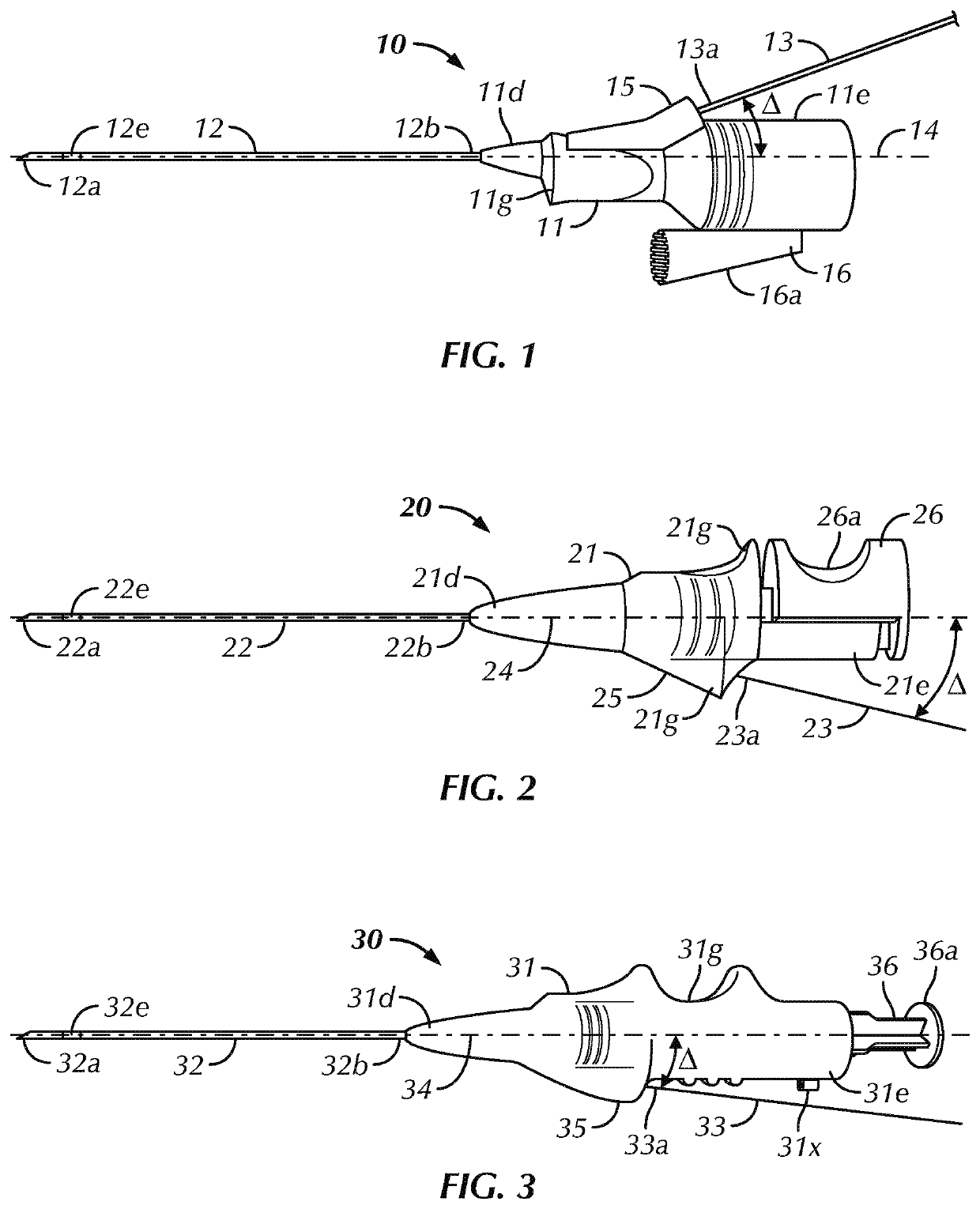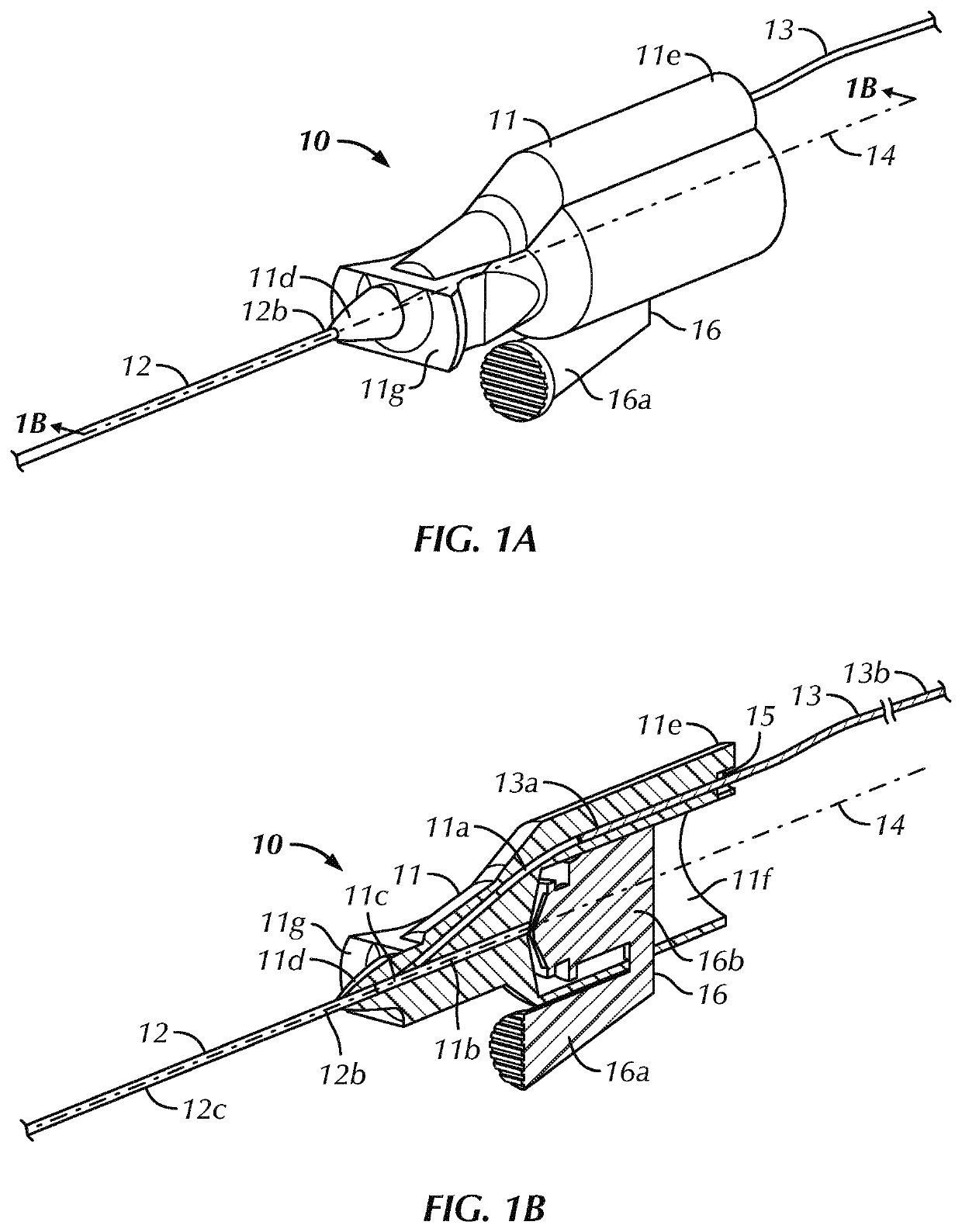Access device with guidewire and related methods
a technology of access device and guidewire, which is applied in the direction of guide wire, catheter, other medical devices, etc., can solve the problems of difficulty in locating and piercing, loss of proper positioning, and difficulty in confirming the proper placement of the needle in the blood vessel, so as to achieve faster operation, greater repeatability, and convenient use
- Summary
- Abstract
- Description
- Claims
- Application Information
AI Technical Summary
Benefits of technology
Problems solved by technology
Method used
Image
Examples
Embodiment Construction
[0055]Certain terminology is used in the following description for convenience only and is not limiting. Unless specifically set forth herein, the terms “a”, “an” and “the” are not limited to one element but instead should be read as meaning “at least one”. The words “right”, “left”, “lower” and “upper” designate directions in the drawings to which reference is made. The words “inwardly” or “distally” and “outwardly” or “proximally” refer to directions toward and away from, respectively, the patient's body, or the geometric center of the preferred access device with a guidewire and related parts thereof. The words, “anterior”, “posterior”, “superior,”“inferior”, “lateral” and related words and / or phrases designate preferred positions, directions and / or orientations in the human body or to directions and / or orientations of the access device and related parts to the patient's body to which reference is made and are not meant to be limiting. The terminology includes the above-listed wo...
PUM
 Login to View More
Login to View More Abstract
Description
Claims
Application Information
 Login to View More
Login to View More - R&D
- Intellectual Property
- Life Sciences
- Materials
- Tech Scout
- Unparalleled Data Quality
- Higher Quality Content
- 60% Fewer Hallucinations
Browse by: Latest US Patents, China's latest patents, Technical Efficacy Thesaurus, Application Domain, Technology Topic, Popular Technical Reports.
© 2025 PatSnap. All rights reserved.Legal|Privacy policy|Modern Slavery Act Transparency Statement|Sitemap|About US| Contact US: help@patsnap.com



